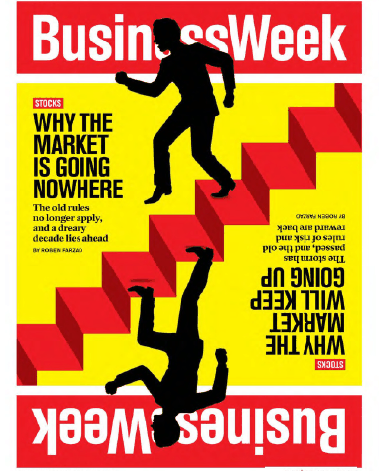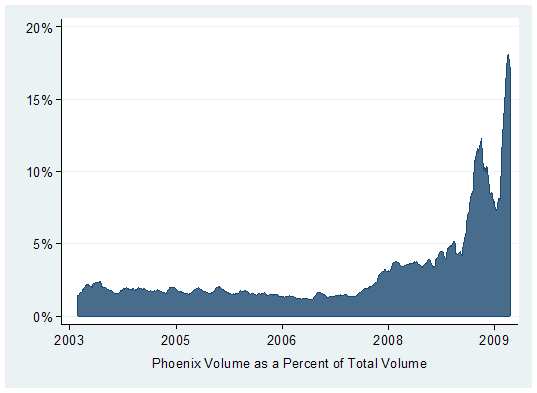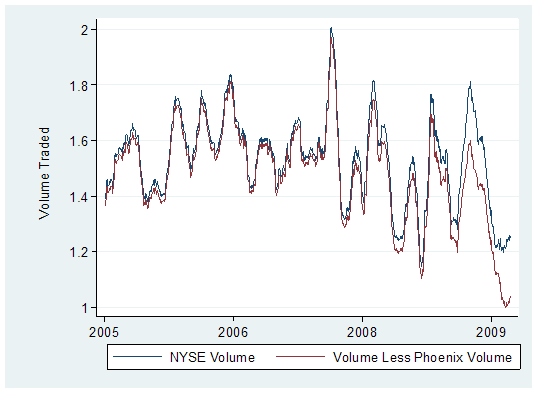The Government Won´t Make Any Money On This Deal.......
Fühlt sich wie ein Deja Vu an......Vergleicht die heutige Meldung bitte mal mit der vom Juli...... CIT hat es immerhin geschafft sich ganze 3 Monate Luft zu verschaffen ( pure Verzweiflung wenn man einen Blick auf die Fälligkeiten wirft )......BRAVO! Ganz nebenbei bemerkt war CIT zum Zeitpunkt der als die TARP Mrd flossen "well capitalized".....Sollten das WSJ & Reuters richtig liegen bleibt festzuhalten das wir endlich den ersten Debt To Equity Swap in einem nicht ganz kleinen Finanzinstitut ( ein Blick in die CIT Analysten Presentation gibt eine gute Übersicht ) zu sehen bekommen. Dumm für CIT hat sie nicht wie Citi ( siehe gestrige Meldung Citi Still Using FDIC TLGP ) in die Kategorie "Too Big Too Fail" fallen.....
 CIT Readies Plan to Hand Control to Bondholders WSJ
CIT Readies Plan to Hand Control to Bondholders WSJLender Readies Plan to Hand Control to Bondholders; Bankruptcy Filing Is an OptionThe fate of CIT Group Inc. was hanging in the balance Tuesday as the large commercial lender readied a plan that would likely hand control of the company to its bondholders.
CIT is preparing a sweeping exchange offer that would eliminate 30% to 40% of its more than $30 billion in debt outstanding, said people familiar with the matter.The plan would offer bondholders new debt secured by CIT assets, as well as nearly all of the equity in a restructured firm. The new debt would mature later than current debt, the impending maturity of which has posed a problem for CIT.
The plan sets up a potential showdown between bondholders with debt coming due soon and those whose debt does not come due for years. If the company doesn't receive enough bondholder support, it plans to execute the restructuring in bankruptcy court, the people familiar with the situation said.While the plan is being developed by a steering committee of bondholders in consultation with CIT management, many of those involved said they didn't expect that the company could avoid seeking Chapter 11 bankruptcy protection, given competing bondholder interests.
If CIT does file, it would be the fifth-largest bankruptcy filing, by assets, in U.S. history, trailing only Lehman Brothers Holdings Inc., Washington Mutual Inc., WorldCom Inc. and General Motors Corp. CIT would continue operating under creditor protection, although other financial businesses have struggled to remain viable in bankruptcy.CIT declined to comment. The people familiar with the matter cautioned that talks remained fluid and many details remained to be determined, including the amount of debt CIT needed to extinguish to avoid a bankruptcy filing.
Having run out of funding options this summer, given its "junk" credit rating, CIT faced the looming need to roll over debt that was maturing. The firm teetered on the verge of a bankruptcy filing before it got a rescue package in late July.
CIT had sought relief from federal regulators and last December did receive $2.3 billion under the Treasury's Troubled Asset Relief Program.In 2009, however, federal regulators declined further aid, having determined that a failure by CIT wouldn't severely harm the economy. That left the lender scrambling to right a balance sheet burdened by bad real-estate and commercial loans.
CIT avoided a bankruptcy filing in late July when a group of large bondholders such as Pimco, Oaktree Capital and Silver Point Capital infused $3 billion in last-minute financing. The money acted like a "bridge" for CIT to prepare a debt-exchange offer.
UPDATE via Zero Hedge ( couldn´t resist )
![[CIT in Last-Ditch Rescue Bid]](http://s.wsj.net/public/resources/images/P1-AR819B_CIT_NS_20090929225236.gif)
Citi and CIT Are Primed for Upside, by Jim Cramer 9/29/2009, 1:54 PM EDT
> Nice timing Jim..... Add this expertise to his "Ten Trillion $ Worth Of Good Calls"..... ;-) But after watching the other ZOMBIE stocks ( AIG, FRE, FNM ) spiking higher & considering the market rationale these days it would not surprise me to see the stock move higher..... Stock closed down 45 percent.........I put both of these up there as examples of companies that won't die, and because they won't die, they live. I know that seems a little circular in reasoning, but because Citigroup never suffered a run like Wachovia and Washington Mutual did, it made it and as our flagship site mentioned, it is safe. If it is safe, it can go higher. Because no one forced CIT into bankruptcy, it can live to play again, and when I read in the New York Post that Paulson owns CIT debt, I realized that he's powerful enough to save this company, particularly because he is one of the investors in IndyMac and knows his way around the bottom of the debt barrel.
These two stocks represent lottery tickets that are no longer rip-ups because they have made it out of the "critical care" stage and are recovering. I would buy them both.
> Autsch......Gelungenes Timing..... Denke dieser Expertenrat reiht sich nathlos an die Reihe der "Ten Trillion $ Worth Of Good Calls" ein..... ;-) Nachdem was ansonsten mit anderen ZOMBIEAKTIEN ( AIG, FRE, FNM, Arcandor, Hypo Real Estate usw ) geschehen ist bzw man die aktuelle Risikobereitschaft berücksichtigt ist nicht ausgeschlossen das selbst diese Meldung noch zu Kurssprüngen führt... Aktie reagiert überraschenderweise mit einem "Abschlag" von 45% vollkommen rational....
Labels: "well capitalized", CIT, cramer, TBTF, where is the debt for equity swap ?


 H/T
H/T 

![[bear markets and stocks]](http://s.wsj.net/public/resources/images/MI-AY840A_ABREA_NS_20090920221439.gif)




![[mergers and banking]](http://s.wsj.net/public/resources/images/MI-AY860_MERGHE_NS_20090920183649.gif)

![[No Easy Exit for Government as Housing Market's Savior]](http://s.wsj.net/public/resources/images/P1-AR590_EXIT_NS_20090914191413.gif)
![[Broad Exposure chart]](http://s.wsj.net/public/resources/images/NA-BA247_WFHA_NS_20090904192026.gif)
![[1fha]](http://s.wsj.net/public/resources/images/ED-AJ969_1fha_NS_20090810191734.gif)
![[ginnie mae]](http://s.wsj.net/public/resources/images/MI-AY666B_GINNI_NS_20090909191212.gif)
![[who2.JPG]](https://blogger.googleusercontent.com/img/b/R29vZ2xl/AVvXsEiBOUqrLEdjRrWjXm35gLuCrSVbk55mEYOlEj4JG83oOK63_2urkcN8HT8eIfAnk-4GmkczQfGNduhht2A9ZXCqW8gmIZVPHL1XPuArf8Lfb3y5CoPtGqPZsKs0xqToEwpadVpLpw/s1600/who2.JPG)




![[Most Recent Quotes from www.kitco.com]](http://www.kitconet.com/charts/metals/gold/t24_au_en_usoz_2.gif)
![[Most Recent Quotes from www.kitco.com]](http://www.kitconet.com/charts/metals/gold/t24_au_en_euoz_2.gif)
